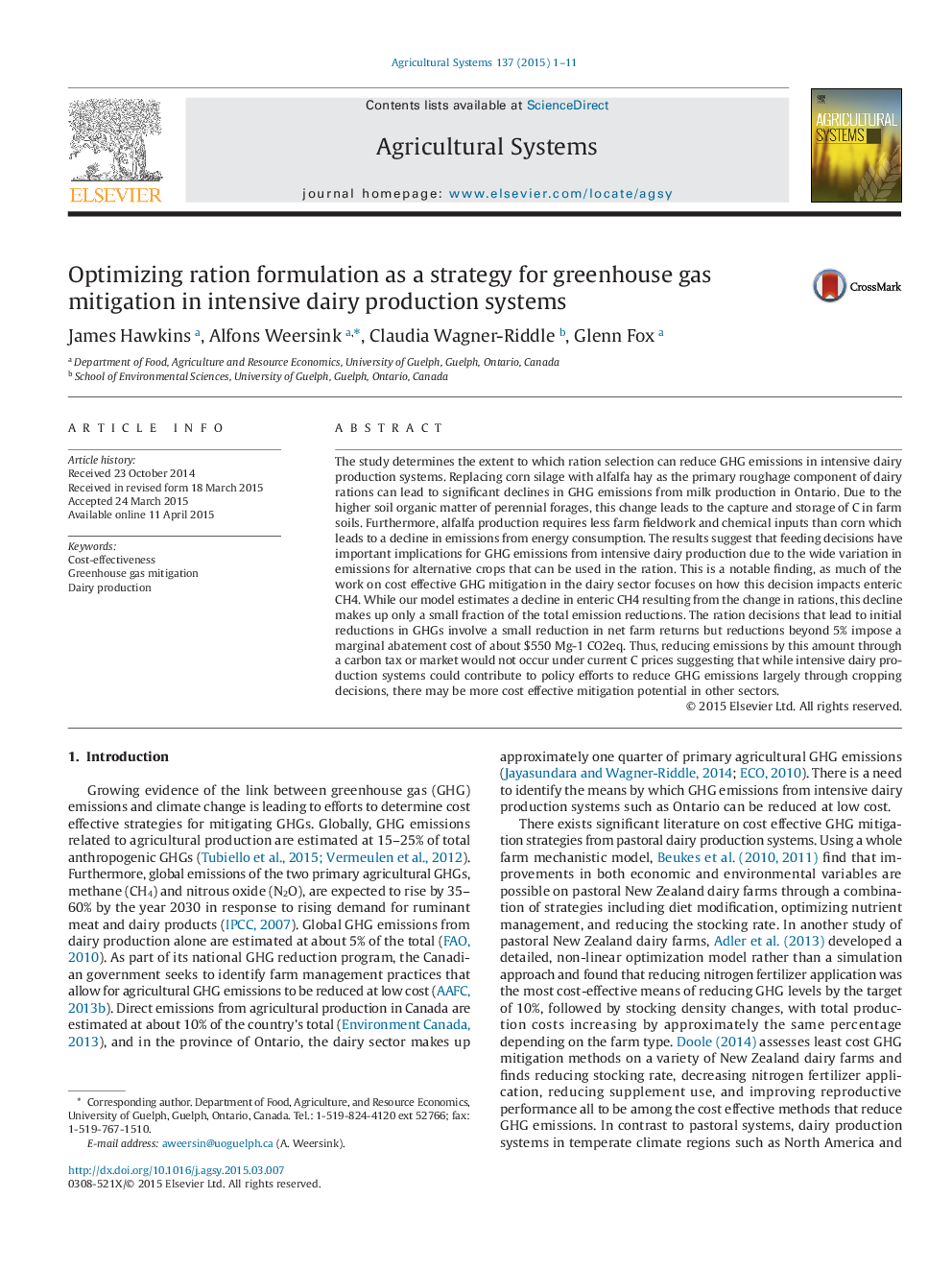| Article ID | Journal | Published Year | Pages | File Type |
|---|---|---|---|---|
| 4491152 | Agricultural Systems | 2015 | 11 Pages |
•GHG emissions achieved through replacement of corn silage with alfalfa in the ration.•Decline in emissions from feed production through capture and storage of C in soils from alfalfa.•GHG reductions of 35% achieved with a reduction in net farm returns of 24%.
The study determines the extent to which ration selection can reduce GHG emissions in intensive dairy production systems. Replacing corn silage with alfalfa hay as the primary roughage component of dairy rations can lead to significant declines in GHG emissions from milk production in Ontario. Due to the higher soil organic matter of perennial forages, this change leads to the capture and storage of C in farm soils. Furthermore, alfalfa production requires less farm fieldwork and chemical inputs than corn which leads to a decline in emissions from energy consumption. The results suggest that feeding decisions have important implications for GHG emissions from intensive dairy production due to the wide variation in emissions for alternative crops that can be used in the ration. This is a notable finding, as much of the work on cost effective GHG mitigation in the dairy sector focuses on how this decision impacts enteric CH4. While our model estimates a decline in enteric CH4 resulting from the change in rations, this decline makes up only a small fraction of the total emission reductions. The ration decisions that lead to initial reductions in GHGs involve a small reduction in net farm returns but reductions beyond 5% impose a marginal abatement cost of about $550 Mg-1 CO2eq. Thus, reducing emissions by this amount through a carbon tax or market would not occur under current C prices suggesting that while intensive dairy production systems could contribute to policy efforts to reduce GHG emissions largely through cropping decisions, there may be more cost effective mitigation potential in other sectors.
